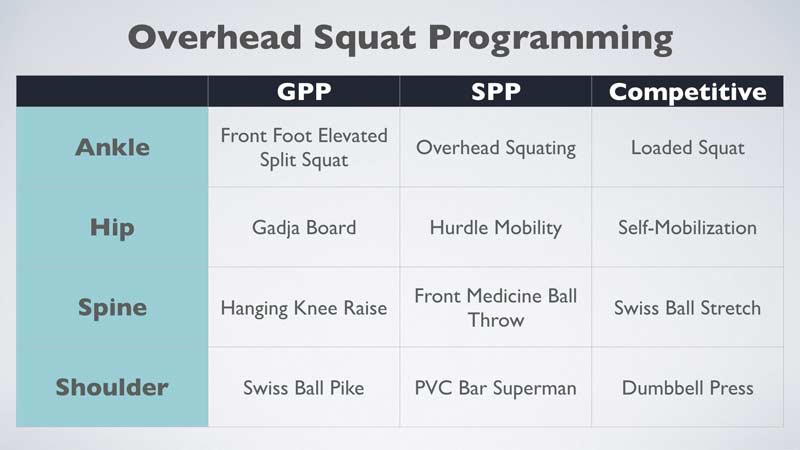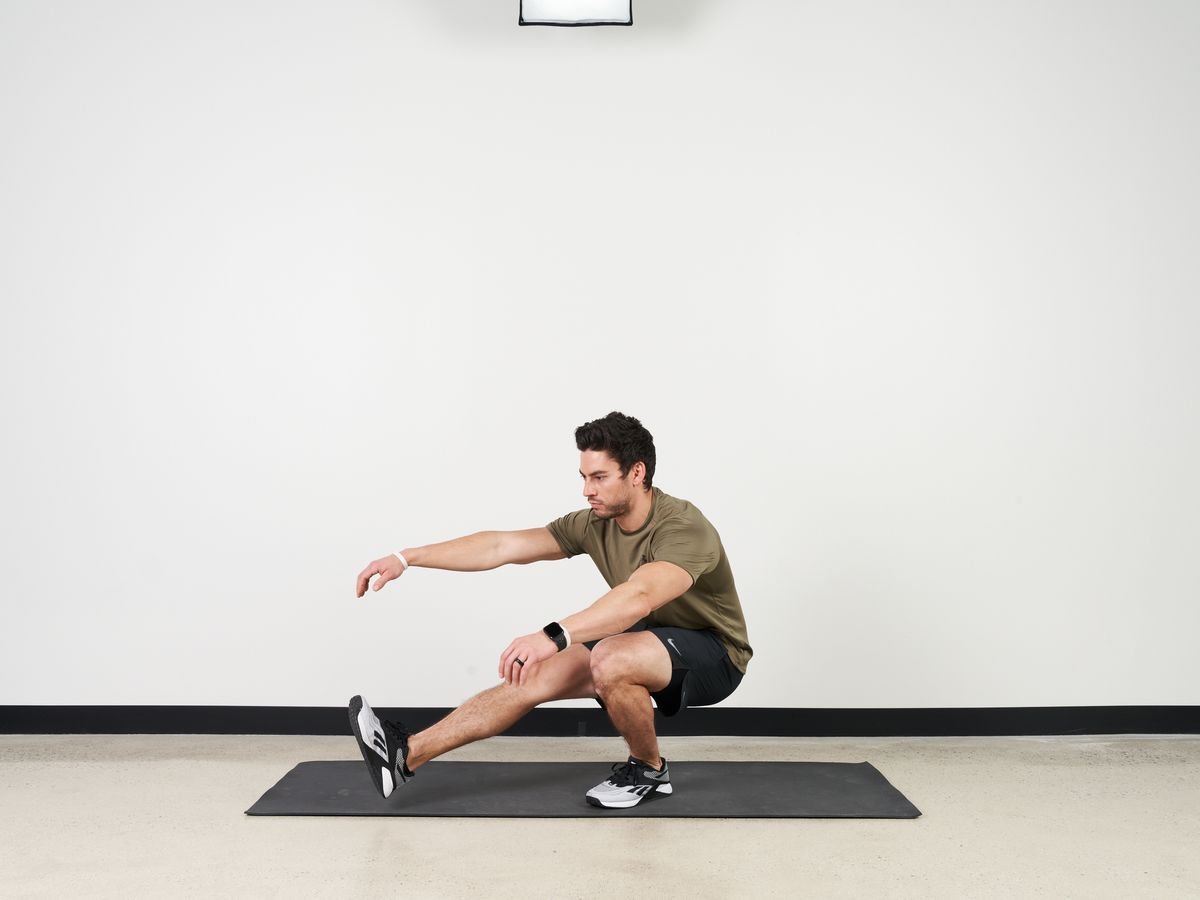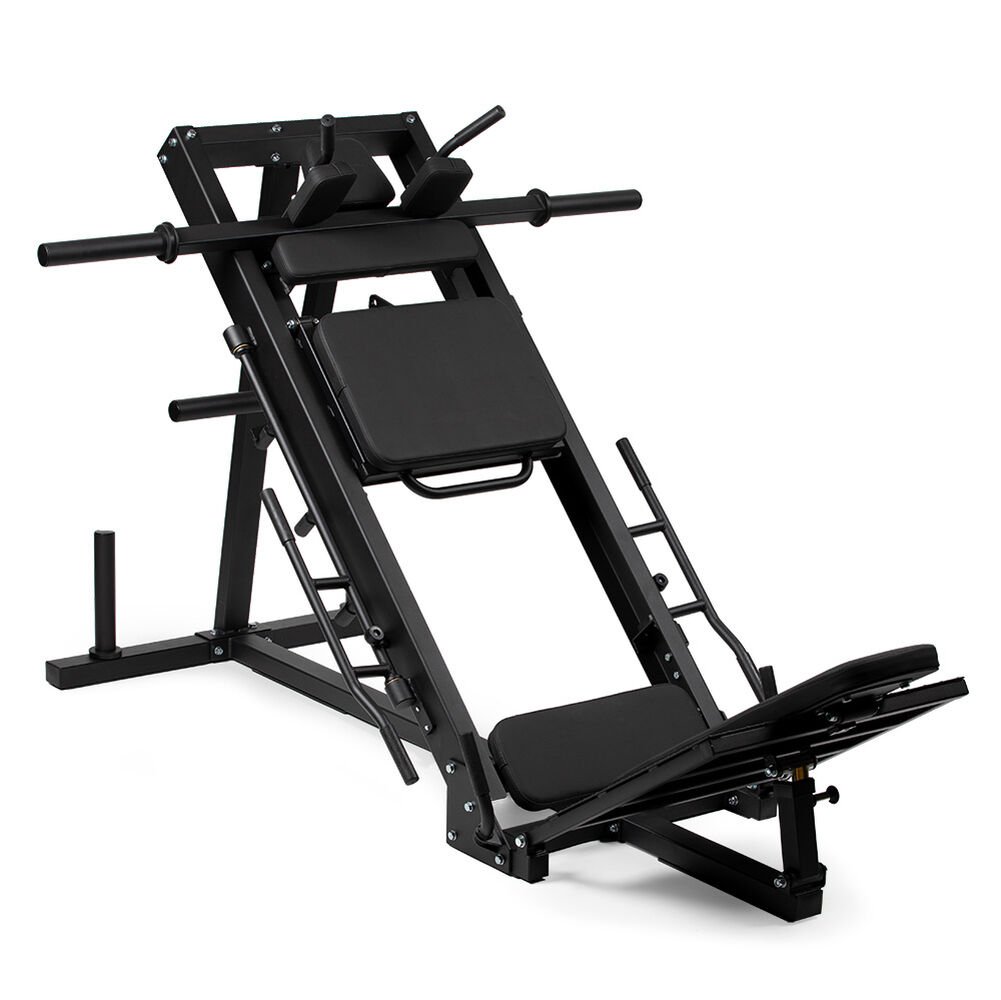The overhead squat is a dynamic exercise that works multiple muscle groups simultaneously. It involves squatting with a weight extended overhead, challenging stability and strength.
The overhead squat, a cornerstone exercise in functional fitness and weightlifting, is renowned for its ability to improve flexibility, core strength, and total body coordination. By requiring the weight to be maintained overhead throughout the squat, it engages the shoulders, back, and arms along with the glutes, thighs, and hips, making it an efficient full-body workout.
This compound movement not only tests your lower body strength but also demands exceptional mobility in the upper back, shoulders, and hips. Proper technique is paramount to safely execute the overhead squat, as it incorporates and develops balance and proprioception. Athletes from various sports incorporate this exercise into their training to enhance their overall performance and address weaknesses.

Credit: www.amazon.com
Introduction To Overhead Squats
Overhead squats combine strength, flexibility, and balance. They work several muscle groups at once. It’s a challenging move that builds core strength and total body power. As you embark on mastering this dynamic exercise, understanding its technique and history is key.
The Basics Of Overhead Squat Technique
Perfecting your form in the overhead squat is essential to prevent injury and maximize benefits. The overhead squat tests and improves your functional strength, flexibility, and mobility. Follow these steps:
- Stance: Stand with feet shoulder-width apart.
- Grip: Hold the barbell with a wide grip overhead.
- Position: Lock your arms and keep the barbell stable.
- Descent: Lower into a squat, keeping your chest up.
- Depth: Aim to squat until the hips are below the knees.
- Ascent: Drive up through the heels to stand.
Remember to keep your core engaged and your back straight. Your eyes should remain forward, and the barbell should be directly over your center of gravity.
Historical Evolution Of The Overhead Squat
The overhead squat has a rich history in strength and conditioning programs. Traditionally used by Olympic weightlifters, this lift has been adopted by athletes all over for its full-body benefits.
| Time Period | Significance |
|---|---|
| Early 20th Century | Origin in Olympic weightlifting |
| Mid-Late 20th Century | Growth in popularity among athletes |
| 21st Century | Incorporation into functional fitness training |
The overhead squat continues to be a test of total body fitness, challenging athletes and fitness enthusiasts around the globe.

Credit: simplifaster.com
Core Strength Amplification
Imagine your body as a fortress. The walls are your limbs, but the core is the command center. In the fitness world, an exercise known as the Overhead Squat reigns supreme for building this vital area. This compound movement does wonders for your core strength. Let’s dig deeper into how it turns your midsection into an unbreakable powerhouse.
Engaging The Powerhouse Of Your Midsection
The Overhead Squat challenges you to maintain a weighted bar above your head while you squat. This action causes the core muscles to activate. Your midsection becomes a dynamic stabilizer, working to keep you balanced. Every muscle from your hips to your shoulders must fire in harmony.
In a bullet-pointed list, let’s see what muscles join the party:
- Rectus Abdominis: Your ‘six-pack’ muscles.
- Obliques: They’re on your side, quite literally.
- Erector Spinae: They run alongside your spine.
- Transverse Abdominis: These wrap around your torso.
Performing the Overhead Squat consistently develops core strength and teaches your muscles to work as one.
The Link Between Core Stability And Injury Prevention
A strong core is your body’s best defense system. It acts as a shield, protecting your spine and surrounding muscles during physical activity. As you squat with your arms extended, you train your core to resist bending and twisting.
Here’s how core stability keeps you safe:
| Activity | Core’s Role |
|---|---|
| Lifting | Reduces strain on the back. |
| Twisting | Helps prevent spinal injuries. |
| Bending | Keeps the lower back protected. |
A stable core means a lower risk of injury. As your core gets stronger, you can handle heavier weights and more challenging activities without the fear of getting hurt.
Mobility And Flexibility Gains
Improving mobility and flexibility is vital for both athletes and non-athletes alike. The overhead squat is a powerful exercise that can help achieve this goal. This dynamic movement not only enhances strength but also increases range of motion in key areas of the body. Let’s explore how incorporating overhead squats into your routine can lead to substantial mobility and flexibility gains.
Stretching The Limits: How Overhead Squats Improve Flexibility
The overhead squat is a full-body workout that challenges multiple muscle groups. Key areas targeted include shoulders, hips, and ankles. These areas often suffer from stiffness due to modern sedentary lifestyles.
- Shoulders gain flexibility as the exercise requires maintaining a wide grip on the bar overhead.
- Hips must sink low, stretching both the hip flexors and extensors.
- Ankles benefit from the necessity to keep heels on the ground, improving their mobility.
The Role Of Mobility In Performance And Daily Life
Mobility is a cornerstone of functional fitness. In sports, better mobility often means improved performance, with athletes executing movements more efficiently. In everyday life, enhanced mobility leads to greater ease in performing common tasks like bending, reaching, and twisting.
| Area of Life | Benefits of Increased Mobility |
|---|---|
| Sports | Quicker reactions, Lesser injuries |
| Everyday Activities | Better posture, Reduced pain |
Committing to overhead squats trains the body to move through a full range of motion, thus translating to smoother and more efficient movement patterns in both the gym and daily life.
Full Body Conditioning
Full Body Conditioning takes center stage with the Overhead Squat exercise. This dynamic movement is not just a squat; it’s a full-fledged workout for your entire body. By pushing weight overhead and squatting low, it challenges every muscle. If you’re dedicated to building a strong, agile, and well-conditioned physique, look no further than the overhead squat.
Muscle Groups Activated During An Overhead Squat
The overhead squat is a powerhouse when it comes to muscle activation. Each rep recruits a multitude of muscle groups, making it a top-tier exercise for full-body development. It targets primary groups while engaging stabilizers, ensuring a well-rounded workout. Here’s a quick rundown of the muscles pumped during this elaborate squat:
- Shoulders (Deltoids) – Hold the weight steady above.
- Upper Back (Trapezius) – Stabilize the shoulder blades.
- Core (Abdominals and Obliques) – Maintain balance and posture.
- Glutes – Power the upward drive.
- Thighs (Quadriceps and Hamstrings) – Control the descent and ascent.
- Calves (Gastrocnemius and Soleus) – Assist in lifting and stabilization.
The Compound Effect: Building Strength And Endurance
A significant benefit of the overhead squat is its compound effect. It’s a two-for-one deal targeting both strength and endurance. As you lift and lower the weight, your body undergoes a total transformation. Your strength increases, and so does your endurance. This means longer workouts and heavier weights. Here’s how the overhead squat manages this dual benefit:
| Benefit | Explanation |
|---|---|
| Multijoint Movement | Recruits several muscle groups simultaneously. |
| Increased Load Capacity | Prepares muscles to handle heavier weights over time. |
| Stamina Boost | Improves cardiovascular and muscular endurance. |
Enhancing Athletic Performance
The overhead squat is more than just a weightlifting exercise. It’s a comprehensive movement that enhances athletic abilities. Athletes from various sports use this exercise to boost their performance. Why? The overhead squat builds strength, stability, and flexibility all at once. Let’s explore how the overhead squat can be the game-changer in athletic training.
Transferable Skills From Overhead Squats To Sports
Overhead squats develop skills that athletes can use in their sports. This exercise trains the body to work as one unit. It improves core strength, balance, and coordination. These skills are essential for any athlete. Here are some benefits:
- Improved posture: Keeps the spine aligned during play.
- Core stability: Builds a strong base for powerful movements.
- Mobility in hips and ankles: Leads to better agility on the field.
- Whole-body coordination: Enhances the ability to perform complex moves.
These skills translate directly to better sports performance.
The Overhead Squat: A Tool For Explosive Power
Explosive power is vital for any athlete. The overhead squat is a unique exercise for developing this power. Here’s why:
- It targets fast-twitch muscle fibers that are essential for quick, powerful movements.
- The lift’s compound nature recruits multiple muscle groups, maximizing power output.
- Speed and strength increase as the athlete pushes upwards from the squat.
By consistently training with overhead squats, athletes can see significant gains in their explosive performance. This leads to faster sprints, higher jumps, and more powerful hits in their respective sports.

Credit: m.facebook.com
Overhead Squat Variations
The Overhead Squat is a powerful exercise for building strength and stability. It’s not just one movement; it’s a sequence of motions that can be tweaked to suit everyone’s needs. Whether you’re a beginner or a seasoned lifter, variations exist to match your skill level and support your fitness goals. Let’s explore the modifications that can keep this exercise fresh and challenging.
Progressing With Different Overhead Squat Techniques
- PVC Pipe Overhead Squat: Start with a lightweight PVC pipe to nail down the form.
- Single-Arm Overhead Squat: Holding a weight in one hand tests balance and coordination.
- Snatch-Grip Overhead Squat: Widen your grip on the bar for a new challenge.
- Overhead Squat with Pause: Pause at the bottom for two seconds to increase muscle activation.
- Overhead Squat with Heels Elevated: Place heels on plates to improve depth and posture.
Adaptations For Different Skill Levels And Goals
| Skill Level | Variation | Goal |
|---|---|---|
| Beginner | Quarter Overhead Squat | Learn the movement |
| Intermediate | Overhead Squat with Dumbbells | Build stability |
| Advanced | Overhead Squat with Chains | Increase strength |
Beginners might favour squatting to a box for consistency. Intermediates can add a mobility and strength aspect by incorporating dumbbells. Advanced athletes can challenge their upper body stability with chains or bands. Each variation ensures everyone can participate and progress. Choose a squat that aligns with your abilities and watch your performance soar.
Frequently Asked Questions On Overhead Squat
What Are Overhead Squats Good For?
Overhead squats improve lower body strength, core stability, and balance. They enhance shoulder mobility and posture by engaging the entire body, particularly the musculoskeletal system. This exercise also boosts functional flexibility and athletic performance.
Why Is Overhead Squat So Hard?
The overhead squat is challenging due to its demands on mobility, strength, balance, and coordination, engaging the entire body in one complex movement.
What Is The Point Of Performance Of The Overhead Squat?
The point of performance for the overhead squat is to assess and improve overall functional strength, stability, flexibility, and mobility in the kinetic chain. It serves as both a training exercise and a diagnostic tool to gauge physical capabilities.
Is Squat To Overhead Press Good?
Yes, the squat to overhead press is an effective compound exercise that builds strength and coordination by engaging multiple muscle groups.
Conclusion
Embracing the overhead squat can transform your fitness journey. It tests strength, flexibility, and balance, targeting multiple muscle groups. Remember, proper form trumps weight — always prioritize safety. As you advance, track your progress for continued improvement. Ready to challenge yourself?
The overhead squat awaits.

